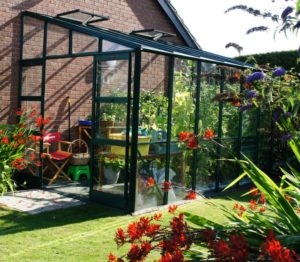
For example, I could swap a stay in my home, which is just outside Washington, D.C., with someone who lives in London (or with this gorgeous house in Bali, pictured above). I would stay in their house, and they would stay in mine. Usually, the stays last about the same amount of time, but they don’t have to occur simultaneously. I have friends who regularly swap houses with people all over the world. If their guests want to visit at a time when they’re not traveling, they decamp to their kids’ house or to a neighbor’s or friend’s. It has worked so well for them, they have managed it in Maryland, San Francisco, Seattle, Paris, the Dordogne region in France, Italy, Belgium…you get the picture.
Though you may pay a small fee to list your house on a swapping site, generally, if you swap with another homeowner, neither of you pays the other any rental fee. So first and foremost, house (or apartment) swapping is a terrific way to save hundreds of dollars (or pounds).
But beyond the economic value of house swapping, what appeals to me about it is the opportunity to lower my “environmental footprint” by staying in a house or flat that matches my lifestyle, rather than in a hotel that takes a bigger environmental toll. That means no sheets and towels being changed every day (which saves lots of energy and water), non-toxic soaps and personal care products I can supply myself (rather than rely on the conventional products most hotels use), fewer electricity demands (you won’t find elevators in most houses!), and the opportunity to recycle on the premises (most hotels don’t offer guests in-room recycling). Plus, I love having access to a kitchen when I travel so that I don’t need to rely on restaurants and fast food joints for meals. I can skip the carry-out trash in favor of buying locally grown food I can prepare with minimum impact myself.
Most home swap sites actually offer a few different options. For example, at Love Home Swap, homeowners can either swap with each other, rent a home they see on the site, or earn points they can apply to different houses (for example, I could “swap” my house to a couple from Scotland, but instead of going to their home, I could use swap points to go to Australia).
Another advantage of home swapping is that it allows you to share your green lifestyle with others who may be new to eco living. By giving visitors the opportunity to see what you have done to save energy and water and minimize waste, you’re providing your guests with a first-hand opportunity to see how rewarding it is to live green.
It only takes a few minutes to join a home swapping site. Many of them offer a free trial period to test it out and see how you like it. Whether you’re planning an extended vacation or a short-holiday, home swapping can be a terrific way to enjoy your destination while minimizing your environmental impact. What do you have to lose?
Have you tried home swapping before? How did it work for you? Let us know!
DISCLAIMER: Sponsors like LoveHomeSwap.com pay a small fee for a guest post like this one. Those fees helps us bring you expert content, but at no cost to you. All sponsors meet our strict criteria for environmental accuracy and in no way affect our editorial judgement. Thanks!


















2 thoughts on “Swap Houses for the Holidays to Help You Stay Green”
Great idea for seeing the world as well! It’s sad to think about how far ahead other eco-friendly countries are from the US. They’ve been practicing sustainability for decades while our legislation is bottle down! Gah!
Yes, but don’t despair too much. We’re making progress, and will continue to do so the more we learn about what’s happening in other parts of the world. Thanks for writing.
Comments are closed.